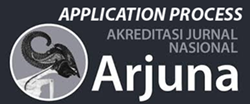Analysis of the Growth Response of Cassava Plants (Manihot Esculenta) to Variability in Water Availability
DOI:
https://doi.org/10.59653/ijmars.v2i02.671Keywords:
cassava, garuda clone, water grip, growth, analysisAbstract
In recent decades, there has been a very pronounced climate change on earth. Reduced rainfall and the occurrence of long droughts are direct impacts that can trigger other problems in the agricultural sector such as crop failure and weakening food security. This will also have an impact on the process of growth and agricultural production in the Lampung Province area, especially on cassava plants. Water often limits the growth and development of cultivated plants. The response of plants to lack of water can be seen in their metabolic activity, morphology, growth rate, or productivity. Cell growth is the function of plants that are most sensitive to water shortages. Lack of water will affect cell turgor so that it will reduce cell development, protein synthesis, and cell wall synthesis. The cassava clones used in this study were Garuda Clones with 5 treatment levels, namely the first treatment (P1) 0L, the second treatment (P2) 0.5L, the third treatment (P3) 1L, the fourth treatment (P4) 1.5L, the fifth treatment (P5) 2L. The result of this study is that there is a cassava growth response to water availability in each treatment except for the variable number of shoots. In the variable plant height, significant response variations are obtained, and it is known that the availability of water needed is directly proportional to the response to plant height growth that also increases.
Downloads
References
Aina OO, Dixon AG, Akinrinde EA. 2007. Effect of soil moisture stress on growth and yield of cassava in Nigeria. Pakistan Journal of Biological Science. 10(18): 30853090. http://doi.org/bmgc25.
BPS Lampung Province 2015. Survey of cassava production and productivity in Lampung Province. Float.
Fitter A.H. and R.K.M. Hay. 1998. Plant Environmental Physiology. Translation: Sri Andani and Purbayanti. Yogyakarta: Gajah Mada University PressGardner, 1991. Physiology of cultivated plants. Indonesia University Press, Jakarta.
Harnowo, D. 1993. Soybean Plant Response to Calum Fertilization and Drought Stress in the Reroductive Phase. IPB. Bogor. thing. 27
Islami, T and Wani Hadi Utomo. 1995. The Relationship of Water, Soil, and Plants. IKIP Semarang Press. Semarang.
Kurniasari, A.M., Adisyahputra and R.Rosman. 2010. Effects of Drought on Nacl Salt Soils on Patchouli Plant Growth. Bul. Littro. 21 (1): p.18- 27.
Levitt, J. 1980. Responses of Plant to Environmental Stress Water, Radiation, Salt and Other Stresses. Academic Press, New York, 365.
Lingga and Marsono. 2007. Fertilizer Instructions for Use. Jakarta: Self-help Spreader
Manan, A.A., & Mahfudz, A, 2015, Effect of Vo lume Air and Verticulture Patterns on Growth and Yield of Green Mustard (Brassicajuncea L.), vol. 12, no.1, p. 33-43
Mubiyanto, B. M. 1997. Coffee plant responses to water stress. News of Coffee and Cocoa Center 13. Horticulture. (2): 83-95
Nio, S. A. 2011. Biomass and Total Chlorophyll Content of Ginger Leaves (Zingiber officinale L.) Experiencing Drought Stress. Scientific Journal of SCIENCE 11: 190-195.
Samanhudi. 2010. Rapid Testing of Sweet Sorghum Plant Resistance to Drought Stress. Agroscience 12(1) : 9 – 13, 2010. Department of Agronomy, Faculty of Agriculture, Sebelas Maret University, Surakarta.
Sutrisno, Kartika, Baliadi, Sri Wahyuningsih, and A. Taufiq. 2023. Differences in Number of Buds per Cuttings and Population on Seedling Growth and Production after Cassava Harvest. JIPI. 28 (3) : 415-422.
Sri Najiyati and Danarti, 1999.Palawija Cultivation and Analysis of Farming.Self-help Spreader. Jakarta
Wargiono, J., A. Hasanuddin, and Suyamto. 2006. Cassava Production Technology Supports Bioethanol Industry. Center for Food Crop Research and Development. Bogor.
Wasswa, P., T. Alicai, S.B. Mukasa. 2010. Optimisation of in vitro techniques for cassava brown streak virus elimination from infected cassava clones. Afr. Crop. Sci. J. 18:235-241.
Downloads
Published
How to Cite
Issue
Section
Categories
License
Copyright (c) 2024 Eko Abadi Novrimansyah

This work is licensed under a Creative Commons Attribution-ShareAlike 4.0 International License.
Authors who publish with this journal agree to the following terms:
- Authors retain copyright and grant the journal right of first publication with the work simultaneously licensed under a Creative Commons Attribution-ShareAlike that allows others to share the work with an acknowledgement of the work's authorship and initial publication in this journal.
- Authors are able to enter into separate, additional contractual arrangements for the non-exclusive distribution of the journal's published version of the work (e.g., post it to an institutional repository or publish it in a book), with an acknowledgement of its initial publication in this journal.
- Authors are permitted and encouraged to post their work online (e.g., in institutional repositories or on their website) prior to and during the submission process, as it can lead to productive exchanges, as well as earlier and greater citation of published work (See The Effect of Open Access).
























